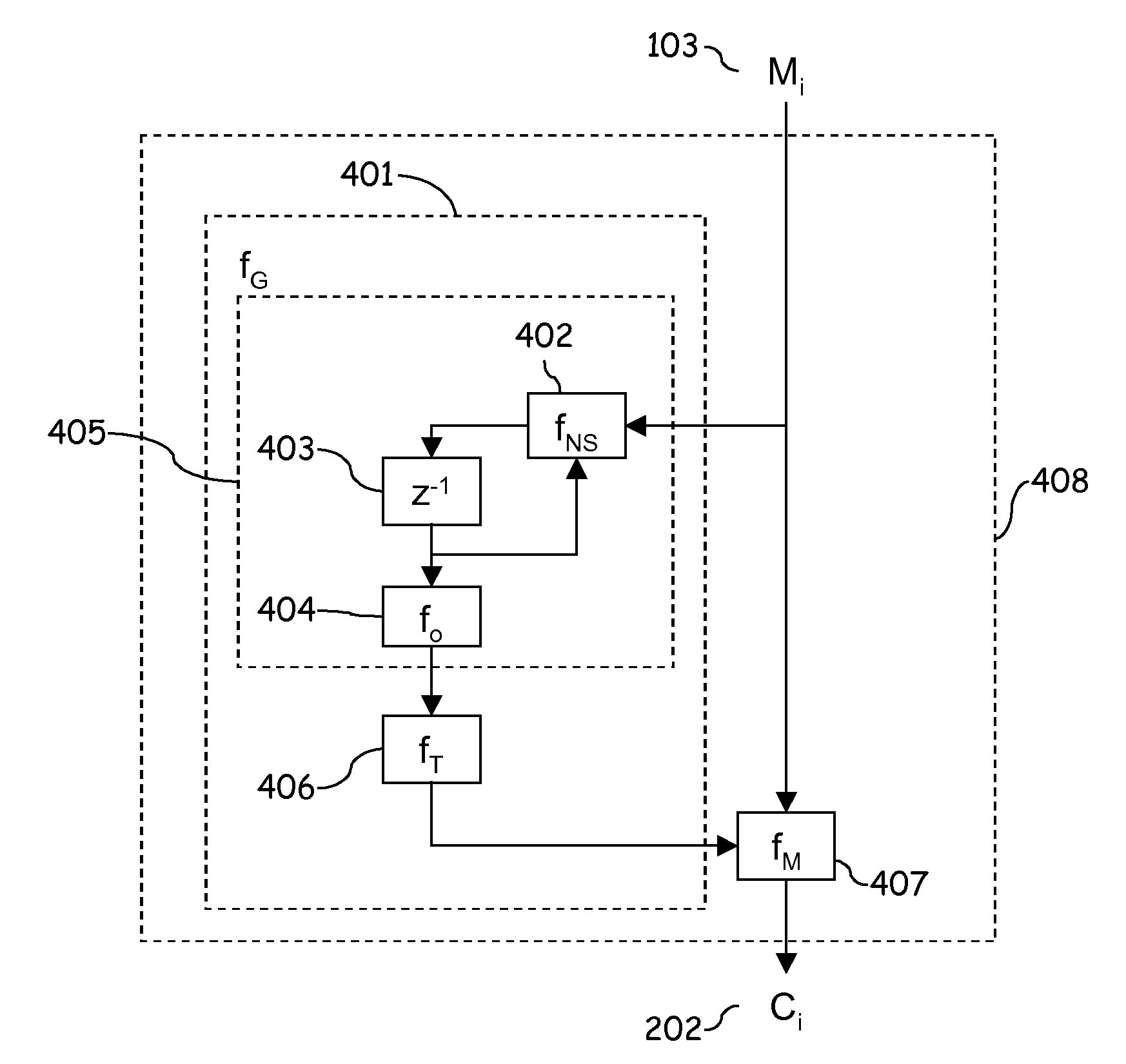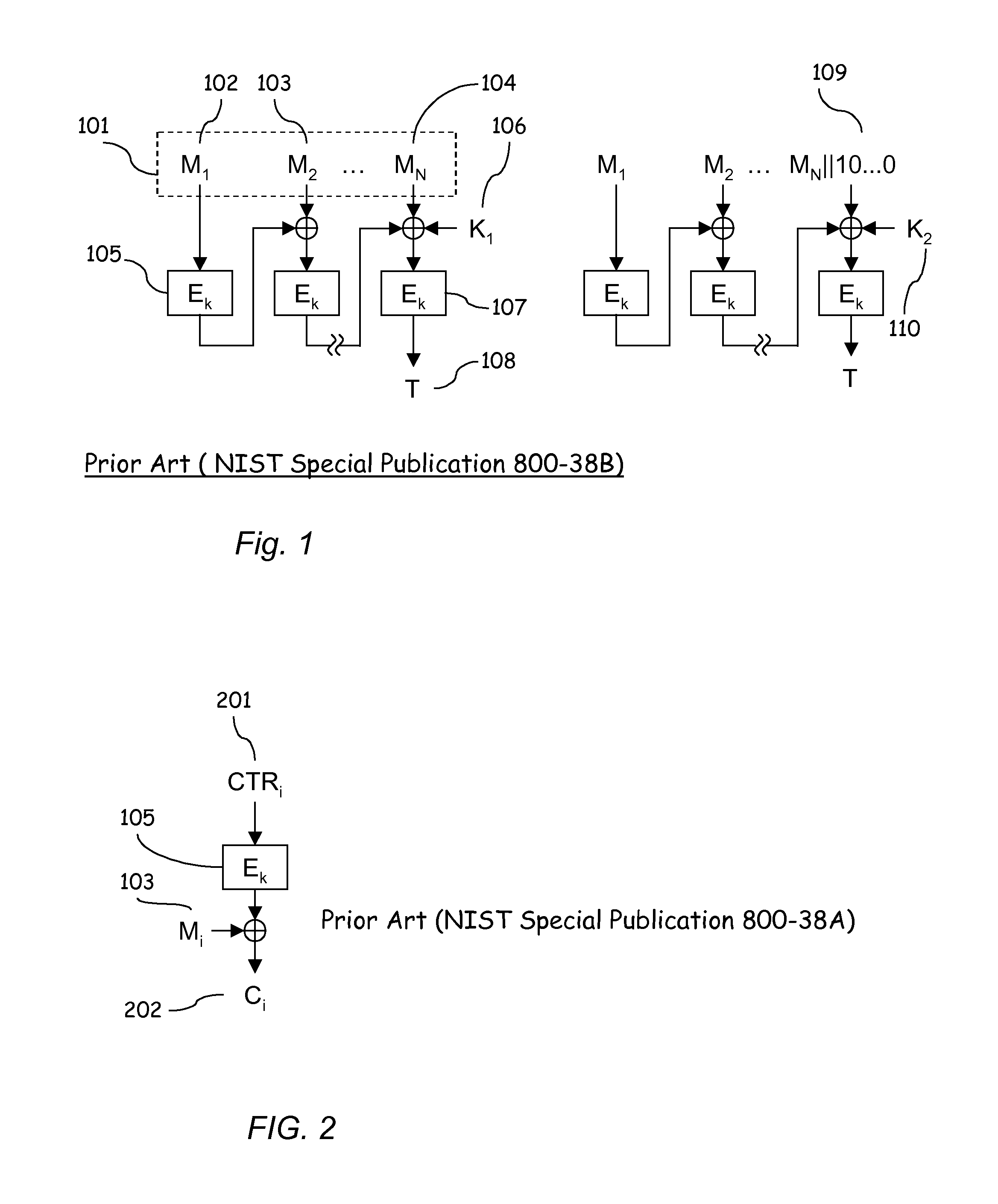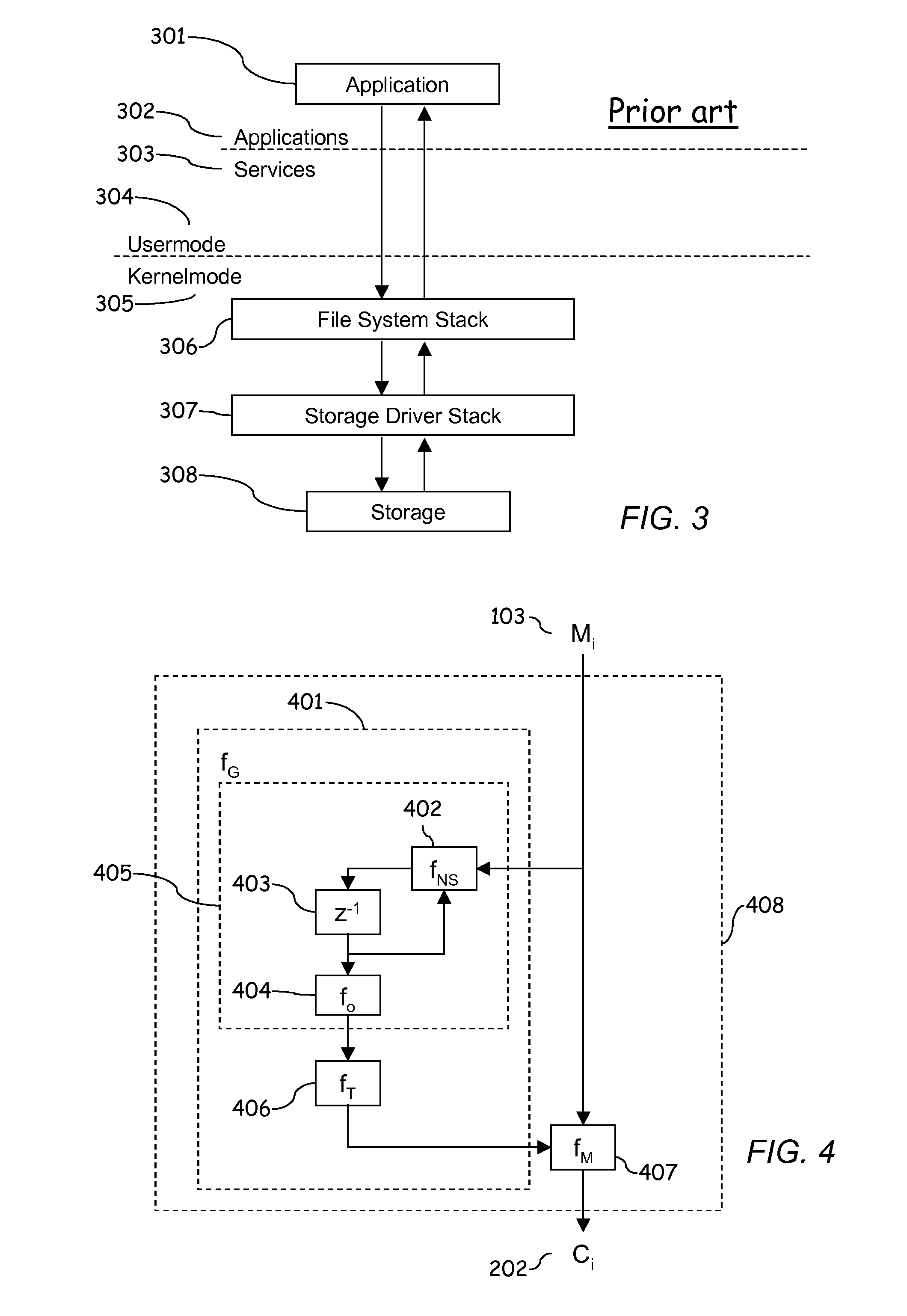Method And Arrangement For Protecting File-Based Information
a file-based information and encryption technology, applied in the field of data encryption and cryptography, can solve the problems of not checking the integrity of restored data, unable to restore plaintext, and difficult to specify the data content that produces the exact desired secure hash, etc., to achieve the effect of improving data reliability
- Summary
- Abstract
- Description
- Claims
- Application Information
AI Technical Summary
Benefits of technology
Problems solved by technology
Method used
Image
Examples
Embodiment Construction
[0070]FIGS. 1, 2, and 3 describing the prior art have been explained in the section “Background of the Invention”. In the following, the invention is illustrated using its different embodiments and figures derived from them.
[0071]FIG. 13 illustrates the basic principle of the invention. As in the state of art, a plaintext block that is to be encrypted is first broken into equal-size plaintext character strings M1, M2, M3, . . . ,Mn. The length of the string is equal to the block size of the block cipher operating on Counter mode. The final string needs not to be of same size as other strings, but the amount of the bits in this string may be less than in the other strings. Thereafter each block is encrypted plaintext character string by plaintext character string so that a key stream generated by the encryption block is XORed with the plaintext character string. The encryption block generates according to its cipher algorithm the key stream based on the hash value applied to the Coun...
PUM
 Login to view more
Login to view more Abstract
Description
Claims
Application Information
 Login to view more
Login to view more - R&D Engineer
- R&D Manager
- IP Professional
- Industry Leading Data Capabilities
- Powerful AI technology
- Patent DNA Extraction
Browse by: Latest US Patents, China's latest patents, Technical Efficacy Thesaurus, Application Domain, Technology Topic.
© 2024 PatSnap. All rights reserved.Legal|Privacy policy|Modern Slavery Act Transparency Statement|Sitemap



